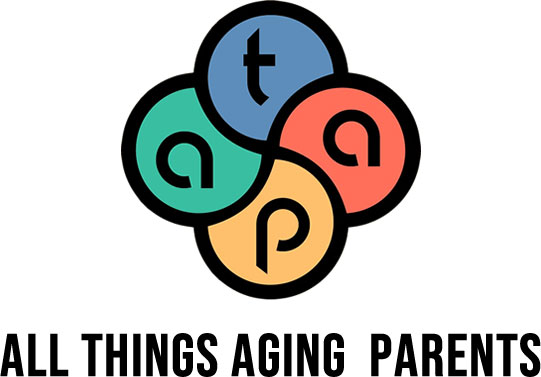Note: This is an overview of Medicare benefits, and is by no means comprehensive. If you want more information you can start here, get this helpful booklet or AARP has a good Q&A page here. All costs mentioned are for 2024.
Started in 1965, Medicare is a work-based social insurance for adults over age 65 who are US citizens or have permanent resident alien status and have lived in the US for 5 continuous years. It covers people regardless of current income because it is paid primarily from payroll (Social Security and FICA) taxes throughout the person’s work life. There are always efforts underway to improve Medicare coverage.
Medicare is not completely free: there are premiums for Part B (outpatient visits, doctors, etc) and Part D (prescription drug coverage), co-insurance costs, deductibles, and limits on services. Also, there are certain enrollment periods that you need to be aware of, but we will not cover those in this article.


In order to get Medicare Part A at no cost, a person must have worked and paid into Social Security through payroll taxes for 10 years (or 40 “credits” at 4 credits per year). If a person doesn’t have enough credits they can buy Medicare by paying a monthly premium of $508 per month (with less than 30 credits) for Part A coverage ($278 with 30 - 39 credits). Or they may qualify based on the work record of their spouse, provided they are at least 65 years old and their spouse is at least 62. People younger than 65 may be eligible if a) they have been receiving Social Security Disability benefits for 24 months (except those with ALS become eligible in the first month), or b) they have permanent kidney failure requiring dialysis or kidney transplant.
What follows is a very basic description of the different parts of Medicare:
Medicare Part A is basically in-patient hospital insurance. It covers a semi-private room, nursing services, surgery and recovery, and in-hospital drugs. It will also cover a skilled nursing facility for up to 100 days if required for the same condition for which (s)he was hospitalized. ((S)He must have been hospitalized for at least 3 days.) It can also cover home health care if the person is homebound, physical therapy, occupational therapy, speech therapy, and hospice care for the terminally ill.
Medicare Part A operates on “benefit periods” which run from the day the person is admitted to the hospital to 60 days after they receive any care from the hospital or skilled nursing facility. (There can be an unlimited number of benefit periods.) For each benefit period, the person pays a deductible of $1,632. After 60 days in-hospital the person pays a co-insurance of $408 up to Day 90 (with 60 lifetime reserve days available with a higher co-insurance), then after that, the person is responsible for all costs. In a skilled nursing facility, Medicare pays all of the costs for the first 20 days. For Days 21-100 there is a co-insurance of $204 per day, and after Day 100 there is no Medicare coverage.
Medicare Part A does not provide coverage for long term care in nursing homes or assisted living, only for short term rehabilitation tied to a hospital stay. For the most part, they do not cover “custodial care” (which is defined as “personal care that does not require the continuing attention of trained medical or paramedical personnel”), except under hospice coverage.
Medicare Part B covers doctors, outpatient procedures, screening and preventative care, lab work, ambulances, some home health care, some chiropractic care, some drugs (like chemotherapy), durable medical equipment and prosthetics. Medicare Part B does not operate on a benefit period like Part A, but the person pays a premium of $174.90 per month, then a yearly deductible of $240. After that (s)he pays 20% of all Medicare approved charges and Medicare pays 80%. Medicare pays 100% of preventative care.
Together, Parts A and B comprise what is called “Original Medicare.”
Medicare Part C is also called Medicare Advantage, and offers health care plans that replace Parts A and B, but are offered by private companies. Medicare Advantage is not the same as Medigap (see below) and it is illegal to sell Medigap insurance to those enrolled in a Medicare Advantage plan. Medicare Advantage plan members continue to pay the premium for Medicare Part B.
Medicare Advantage plans offer most of the same coverage as Original Medicare, except for hospice care and foreign travel coverage. However, they may require prior approval or preauthorization for procedures. Some Medicare Advantage plans offer additional coverage, such as dental and vision checkups and annual physical exams, and most also include Part D. Cost sharing is different with Medicare Advantage, often requiring co-pays of $10 or $20 for a doctor visit, for example. These policies have annual out-of-pocket spending limits.
People of any health condition (except end-stage renal disease) are accepted in Medicare Advantage (within the plan’s service coverage area). Some experts recommend that if the person needs the care of several specialists they stay enrolled in Original Medicare, as some are not covered by Medicare Advantage (see also the note about “guaranteed issue right” on Medigap coverage below). There are certain enrollment periods where a person can select one of 6 types of Medicare Advantage plans. During this period they may choose to switch plans or move to Original Medicare, or from Original Medicare to Medicare Advantage. Then (with certain exceptions) they are locked in for one year.
Medicare Part D is prescription drug coverage provided by private insurance companies. The enrollee chooses what plan best fits his/her needs. Most companies use a tiered co-pay structure: one amount for generic medications, higher for brand name, then highest for specialty drugs. About 30% of Part D participants get their coverage through Medicare Advantage plans. An average monthly premium is about $55, but premiums range widely from about $6 to $111 per month. There is a Part D Low-Income Subsidy (LIS) program that offers additional premium and cost-sharing assistance for enrollees with low incomes. You can get more information here. In 2023, as part of the Inflation Reduction Act, Part D enrollees will pay no more than $35 per month for covered insulin products in all Part D plans. Another part of the Act authorizes the Department of Health and Human Services to negotiate the price of some drugs covered under Medicare.
The structure of a Part D prescription drug plan benefit can be quite confusing. There are four phases of coverage:
- Annual Deductible Phase: During this phase, the plan pays nothing until the member has met the plan’s deductible. No plan’s deductible can be higher than $545, and some plans have no deductible.
- Initial Coverage Phase: During this phase, the member pays 25% of the cost of the drug and the plan pays the balance. This phase lasts up to a total expense of $5030 (including individual and plan payments). This is not what the individual has paid, but includes what the plan has paid, as well.
- Coverage Gap: The member continues to pay 25% for covered brand-name and generic drugs, plus a small portion of the pharmacy dispensing fee (around $1-$3), up to $6,333.75. (That amount includes drug costs paid by the member and the 70% discount on brand-name drugs provided by the drug manufacturer, but not what the plan pays.)
- Catastrophic Benefit Phase: Once the member has paid $8,000 out-of-pocket they reach catastrophic coverage. At this point, the member pays nothing more for prescription drugs until the end of the year.
Medicare Part D provides assistance to low income-individuals, and some benefits may be received through the Veterans Administration.
Medicare Supplement Insurance (known as Medigap) is sold by private insurance companies to fill in gaps in Original Medicare coverage, notably the deductibles, cost sharing, and benefit gaps. There are 10 standard Medigap policies that are allowed to be sold, and cost ranges by state and by the amount of coverage they provide. It pays to shop around. All policies cover the Part A inpatient hospital co-insurance for days over 60, and all provide 365 days of in-patient hospitalization for those who use all of their Medicare benefits. All cover the Part B co-insurance, either in whole or in part, and most cover all or part of the co-insurance for a skilled nursing facility. Most cover all or part of the Part A deductible.
Medigap pays second to Medicare, and won’t pay if Medicare doesn’t pay. Medigap serves only as a supplement to Original Medicare, not Medicare Advantage (Part C). It is illegal to sell a Medigap policy to those enrolled in a Medicare Advantage plan or Medicaid or to sell more than one Medigap policy to one person. Medigap coverage is for the individual only – each spouse must purchase their own policy.
Medicare enrollees have a “guaranteed issue right” to purchase a Medigap policy when they first enroll in Medicare at age 65. This means they can get the Medigap policy regardless of their medical condition (no medical underwriting, even if they have pre-existing conditions). This is the only time they have that right. Other than this initial enrollment period, they would be subject to medical underwriting so they may not qualify for Medigap. If the person initially enrolls with Medicare Advantage, rather than Original Medicare, then wants to switch back to Original Medicare, they must qualify to be able to purchase Medigap insurance.
Resources:



















